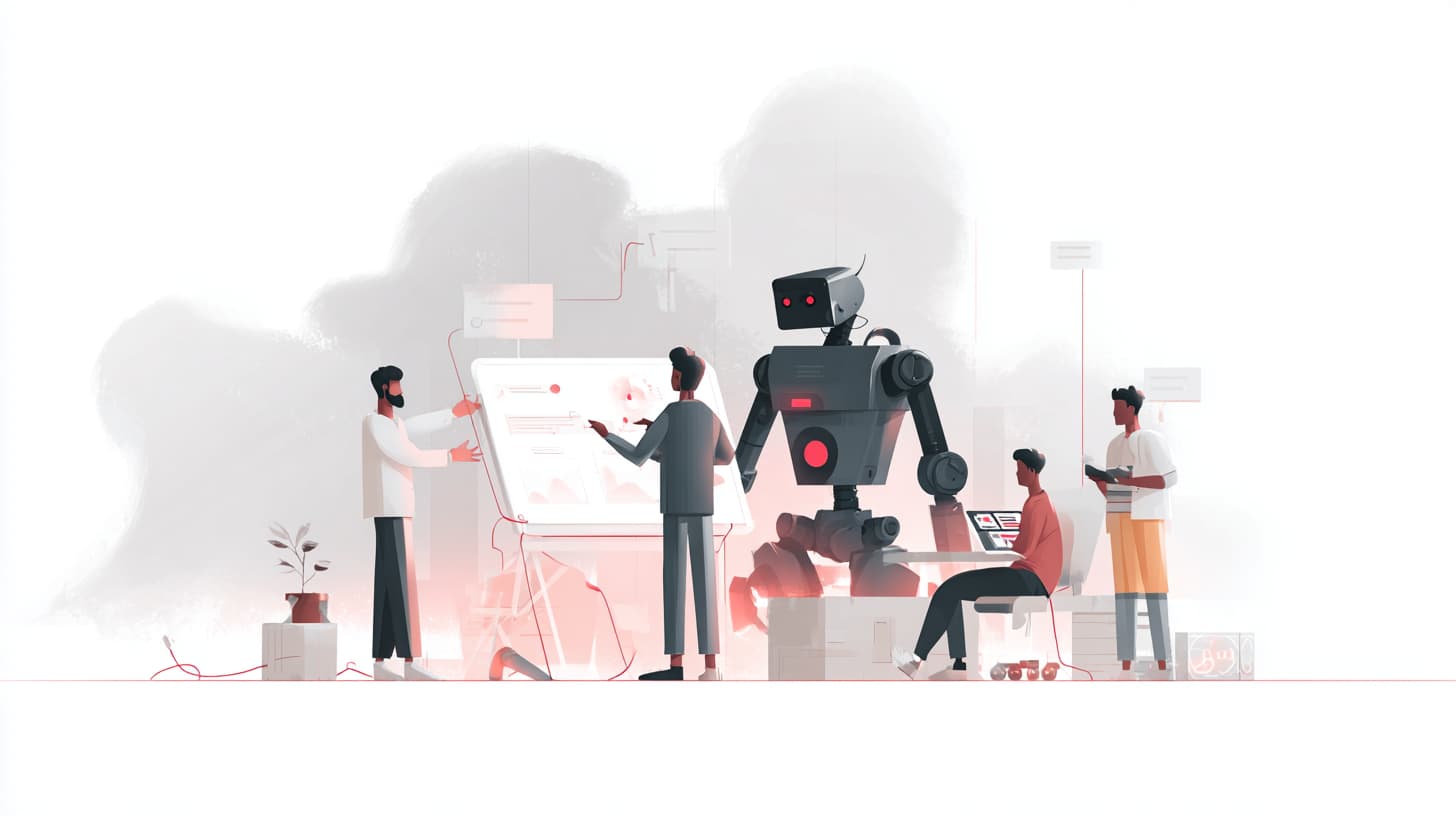By EloInsights
- Rodrigo Bassani, partner and CTO at EloGroup, talks about how organizations can incorporate new tech capabilities into their business.
- He highlights the importance of awareness during this process, to adopt technologies that respond to business needs.
- Bassani explains the role that technology plays in the process of attracting development talent.
Cloud computing, digital security, analytics, blockchain… Surely, you have heard of these technological trends and their importance for a business that wants to remain relevant on the frontier of digital transformation. But, after all, do these technologies need to be adopted by every type of organization? How do you know where each one fits in? And where to start?
In this interview with EloInsights, the CTO of EloGroup, Rodrigo Bassani, discusses these issues and explains why an organization needs to be conscious when choosing which technology stack to implement based on the specific needs of the business. This way, unnecessary cost increases can be avoided.
In the conversation, Bassani also talks about the importance of acculturating leadership in technological competencies – tech capabilities – so that the gears between the business area and IT become more harmonious. He also discusses the role these technologies play in attracting talent and formulating a TAM strategy that integrates technology, analytics and management.
How important are tech capabilities for an organization?
If we look at the technological capabilities that the market is dealing with nowadays, such as cloud computing, analytics, cyber security, digital media, and emerging technologies, it does not mean that adopting all of them will make your company more digital. It depends on the industry you are in and which business that capability or set of capabilities will have the most impact on.
It is important to develop this culture to understand the reality of business versus the capabilities that need to be adopted.
For example, when you are focused on efficiency, you will invest in capabilities that support cost reduction, being more efficient, and reducing processes. Another thing is when you are thinking about redefining value, creating new businesses; then you are going to adopt or even experiment with those capabilities that are going to be part of your reality.
It can happen that a company adopts cloud computing but doubles the cost because it has an on-premises system, for example. Or investing in analytics and wanting to build a data lake and not having a strategy behind it, which ends up bringing more costs to the operation.
Do you need to invest in cloud computing, analytics and security? Yes, but I must give due weight to the context in which I am inserted to be able to roadmap this evolution in a structured way.
If the company does not have this clear in its culture, it can first generate more problems to manage. This is because it will greatly increase its portfolio of technologies and capabilities aimed at this vision of digital transformation, instead of adopting what will make sense, and what will bring the expected benefit on this journey. So, it is important to invest in training the team so that they are cohesive, and these decisions are adherent to the business.
What is the starting point for an organization to understand what technological skills it can apply, to get away from generalization and understand what its business really needs?
Regardless of the starting point, the important thing is to converge on the same place. Or at least to have a sense of direction. The speed of business today is very dynamic, and the difficulty for IT is usually to keep up with this speed. In this increasingly rapid decision-making process, in which businesses need to be adaptable, IT needs to be harmoniously connected.
If the starting point is through a business need, you need to have the process minimally adequate to respond at the speed the business expects.
I would say that adapting processes and acculturating to the digital transformation journey is one of the pillars. You must change the processes and change the way the organization is structured so that you can produce a good response and organize these processes.
It is important to understand your journey; an understanding of your portfolio of systems, how they support the operation from the point of view of delivering value. There are some very critical systems which, if they are stopped, can cause huge losses for companies.
For example, if your business depends 100% on exposure on the internet, such as e-commerce, the digital security capability is extremely important, because if the site goes down, or data is hijacked for any reason, the business will come to an unexpected halt.
So, it makes sense to invest in “blue team” and “red team” teams – which work on the logic that while one team tries to hack and find digital vulnerabilities in your company, the other is focused on increasing the level of security and guarding against the same vulnerabilities.
In other words, it depends a lot on which industry you are in to have this pillar initiative. So, processes, people and the life cycle that all this involves need to be geared towards a very rapid response for business.
Having this coherence between the industry and the reality in which the companies are inserted is essential for success.
Are there tech capabilities that touch on various industries and that organizations need to keep in mind?
I think so. And I also see companies all moving in this direction. For example, when we talk about being prepared for the speed of business, having a fully adherent process is extremely important. There is no point in changing my team to agile if my process is very bureaucratic and manual.
Then I need to adopt DevOps, a software engineering practice that aims to promote integration between software development and operation. It is worth asking: Are my processes automated, do I have continuous operation to capture value efficiently? If all the squads are adhering to the DevOps process, you can achieve much greater speed in this process compared to just adopting agile processes, as is the case with Safe, one of the main corporate framework references for agile management.
In the process of change, we have the good practices of ITIL [Information Technology Infrastructure Library], which are commonly used in the IT area of large companies. They are usually organized in a committee to approve this change and make the application available in production. But in the last decade, this process has changed, and a digital born company is probably unaware of it.
In this change committee you presented your project, your code change, what you were promoting, so that this group could do an impact analysis and approve it. Once this had been approved, you had a window in which you could promote and, in case of failure, carry out the rollback procedure. Today, when we talk about agility, for example, many businesses won’t fit into such a bureaucratic process. It needs to be more dynamic.
An increase in the number of releases translates into greater efficiency, and in meeting the expectations of new features that will be made available. To achieve this, it is common to adopt deployment strategies. The most common is blue-green deployment, which consists of running two versions of the application at the same time and moving traffic from the version in production (green version) to the latest version (blue version); there are also other strategies such as A/B testing, canary rollout and so on.
In this context, there are three important pillars: processes, people and technology. Author Donovan Brown uses an interesting definition of DevOps: the union of people, processes and products to enable the continuous delivery of value to the end users of the solution. This is a simple way of thinking about it.
How do you acculturate leadership and the business area in these tech capabilities?
One of the main benefits of leadership understanding technology is that it knows the possibilities that are related to the delivery of technology. It is common for a leader to ask for something “for tomorrow” without knowing the complexity behind the request. There are often requests that do not adhere to the possible delivery reality of that business.
What do we give up, for example, with such a request? Quality, performance, adherence to the requirement… If it is a business that is in a life cycle of experimentation, it is worth testing these hypotheses and confirming them experimentally until you are clear about the adoption.
When you have this acculturation of senior leadership, it makes it easier to work with the imperatives in harmony. The leader will understand that he does not need to disrupt his business area, but to be more efficient, and will know which technologies will support this process.
A business leader does not need to understand as much as a developer, because they have quite different career paths. It is about giving them the tools that will enable them to make the best decision. Given the level they are at, what would be the ideal training program for them to fulfill their role well?
This way, the leadership will have a better understanding of decision-making, which is often distributed to the technical team; they will be able to make requests or have a more structured dialog. Better communication is created between these worlds, which have different languages.
Technically, it is a very radical change in culture.
How can developing tech capabilities enable an organization to better position itself in the current war for talent in the job market?
One of the indicators is reports published by sites such as Stack Overflow, which show the adoption of technologies by the developers themselves. This includes technologies such as AngularJS and React, for example, which are front-end tools.
Today there is a “soup” of related stacks; starting with the more traditional ones, like Java, which are the most mature, so this is a good indicator for you to know where the professionals are.
But you also need to look inside your organization, at the established portfolio.
It is important to combine these two pieces of information to figure out which technologies should be adopted, in a way that minimally adheres to the market. One of the concerns that devs have is that they do not fall behind; they want to adopt technologies that are on the rise in the market, but this comes at a cost to the organization. The more you expand this portfolio of stacks, the more complex it becomes to keep it afterwards. So, the ideal is not to have so many adoptions. It can become too spread out.
It is important to ask: what do I need in my environment for the climate to be favorable; for them to want to be here increasingly? It is always linked to a purpose. I think that fewer people are staying just for the salary. They want to have a positive impact on their lives and then we have the challenge of trying to combine these things as much as possible.
When we talk about integrating technology, analytics and management, TAM, how important is technology in this trio?
From the point of view of how technology can contribute to this vision of structuring a company that increasingly needs a gear that evolves consistently, that adheres to the organization’s processes and aspirations, and that we can build something that will deliver value to the business, I think that the role of technology has to be increasingly conscious.
Organizations can no longer adopt technology for technology’s sake, or because it is a buzzword. They must understand the market movement, where the technologies are heading, how this converges so that the business is more efficient and can deliver impact through that technology. It is important to understand what technical practices will be adopted so that the business is responsive.
If the business is being disrupted all the time, for example, I need to have a stack that directs me to be adaptable to this constant change.
What are the practices within the software development lifecycle that will enable my talents to be satisfied with the path the company is taking, and that will allow the organization to also receive the positive impact of this contribution from the technology area?
When we talk about this importance, we are increasingly talking about contributing to various dimensions: from a technical point of view, from the point of view of purpose, of generating value… A view that brings all of this together in an integrated way.











